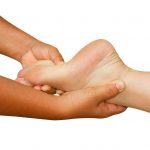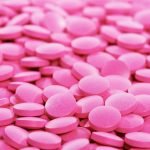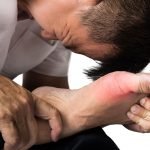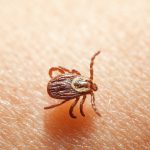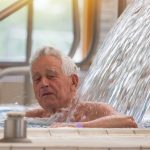Wired for Self-Healing- Part 3
JAMES SENSENIG, ND
LOUISE EDWARDS, ND, LAC
This column is transcribed from a weekly live conversation produced by the Naturopathic Medical Institute (NMI). The goal of NMI is to preserve and promote the principles of naturopathic philosophy through clinical application, in your offices and in your communities, every day. This lightly edited transcript (by Emily Kane, ND) is the third part of a 3-part conversation between Drs Jim Sensenig and Louise Edwards, which took place on April 5, 2017.
Dr Sensenig: We have been talking about how the basics of human physiology (the need for air, water, and nutrition) deeply inform the tenets of naturopathic medicine. I’m reminded of another anecdote: One of the things that I distinctly remember from my first year in school was when some of my classmates would complain about studying the basic sciences. They’d say, “Why do we need these?”
The argument was that these classes were being taught from what the students thought of as an allopathic perspective. And the truth is that some of them were being taught very poorly and inadequately.
Dr Broadwell said this: “There’s no such thing as allopathic or naturopathic basic sciences.” I know what he meant, but I would add that the context in which the information is presented can be in a vitalistic or mechanistic model, even if it’s still the same information.
Nevertheless, one of the things he said is, “In naturopathic medicine the basic sciences are the basic sciences.” If you are practicing correctly, there will never be a day in your life when you will not revisit your basic sciences. You’re going to go back to the anatomy, the physiology, the biochemistry, the immunology in everything you do.
Dr Broadwell would say that’s not true in allopathic medicine. The basic sciences there have become an academic rite of passage. You pass them to get through your boards, and then you look up whatever drug is used for a particular symptom.
When you say that allopaths have based the concept of evidence on the wrong premise, Dr Edwards, you are not alone in this observation. All of our predecessors have said that. Kent says it very articulately in one of his lectures: “The allopaths will never be able to cure disease, because they do not understand what disease is.”
You mentioned that, unfortunately, not all of the faculty at our naturopathic institutions have been schooled in this philosophy. This is a problem: Many of our faculty teaching in our naturopathic medical schools don’t have a grasp of the basic philosophy.
Dr Edwards: The Basic Science faculty have not all been trained in naturopathic principles. But I want to clarify that our naturopathic faculty are deeply rooted in it.
Dr Sensenig: I’m being critical of the whole profession. Our Basic Sciences faculty is not grounded in the basic principles of science. It’s incredible that I have to admit that we have a faculty in most of our schools that have never been grounded in the basic premise of what we’re doing. How would that work in any other profession?
Creating Conditions for Health
Dr Edwards: We can curse the dark or we can light the light. The light in this is pretty straightforward. If you have the conditions for health, you do not have the conditions for disease. That’s simple. The conditions for health are created by looking at the things that determine our health. A lot of times, we get spun out in the idea that we have to have a treatment for a particular disease, for all these signs and symptoms.
But again, if you look at what the signs and symptoms are indicating, they’re indicating that the organism is trying to compensate for some disturbance in a determinant: a poor diet, a lack of hydration, a lack of movement, a psychological challenge, staying up all night and sleeping during the day, etc.
It is the most fundamental concept that if you want to create health, you must create the conditions for health. Even in acute situations, for instance, if I have a patient who simply comes in with the flu or a head cold, I’m not going to just give them echinacea and be done with it. No. Much more importantly, I’m going to say, “Hydrate with water only. Maybe use some electrolytes. Let’s simplify your diet to protein and vegetables. Make sure you have adequate protein so that you can build those white blood cells that you need for your immune response. And rest. And are there any psychological challenges that you’re experiencing?” If so, I’ll offer them some support for that issue.
If we just go to using our therapies appropriately, but we neglect creating conditions for health, we’re not going to see a complete and rapid return to health. We must have the conditions for health, because we evolved selecting to be healthy as long as we live by the laws of the planet on which we evolved.
Dr Sensenig: Can you tell us of some “miraculous” cases you’ve been involved with?
Dr Edwards: I want to share a recent case that I had with a woman that had cancer in her throat. This woman is in her early 70s, and she was about to go through radiation of her throat, which meant that there would be adhesions and tightening, and she would have to get a PEG [percutaneous endoscopic gastrostomy] tube for nutrition.
So, knowing that this was going to happen, I spent the 3 weeks beforehand building her up, making sure that she had an excellent diet, including an adequate amount of protein and essential fatty acids. I also gave her an herbal formula from the Chinese tradition using Ganoderma reishi to build her blood and to support her kidney functions from the Chinese Medicine perspective. I also gave her something that Dr Noel Peterson from Oregon has put together: a gel combination of flavonoids and glutathione that’s applied topically over the area that is going to be irradiated.
And then we talked about her mental state. We talked about what her positive vision was of her healing process; what her fears were, and how to address them. How do we create a positive vision for this? Going into this, she was really terrified. Radiation is a frightening experience. During the course of treatment, she would have 6 weeks of radiation, 5 days a week. She came out the other side with no burns on her neck. She had not lost much weight, either.
Going in, the medical doctors on this case didn’t want to talk to me. They didn’t want to collaborate. But when she came out the other side, they said that they had never seen anybody go through this process and remain so healthy.
Dr Sensenig: And then they called you up and wanted to know everything that you did, right?
Dr Edwards: How I wish! You’d think their curiosity would get the better of them. One other thing that I forgot to mention: We also used, quite simply, [a commercial slippery elm] tea, made really strong with 3 teabags per cup, to help with the inflammation of the mucosal membrane in her esophagus, where she was getting her radiation. That’s not a complicated protocol. Every day, she came out and said thank you for saving her from that horrible radiation. She just had a follow-up CT scan, and she’s absolutely clear of cancer.
Dr Sensenig: Going back to basic principles, you just said that it’s not a complicated protocol, but again, I hasten to point out, compared to conventional medicine where the protocol is just to irradiate the tumor, a naturopathic approach is a bit more complicated. I see this all the time in my practice: A patient who has been treated allopathically with no improvement will get positive results from a few simple applications. It isn’t rocket science. We have all kinds of tools, and that is complex, but most are quite simple in their application.
The Therapeutic Order
Dr Edwards: I would like to give another general example. We will oftentimes see people who have complex cases. They may have half-a-dozen different diagnoses of various sorts, usually with some sort of autoimmune disorder thrown in. They may be on half-a-dozen different medications, and they will come in to us and say, “Nobody’s been able to help me. You’re my last resort.”
When I was young, that used to make me gulp. But it didn’t take me long to realize that, in some ways, those are the simplest folks to treat, in that they usually have so many disturbed determinants, and so many compromised organs and systems, that you can start seeing significant changes very quickly by shifting their diet, their hydration, their sleep, and supporting the organs and systems that are compensating for them.
There’s one other piece that I want to throw in here, in terms of clinical thinking. Dr Zeff put together The Therapeutic Order, which is 7 steps to help our thinking about how we apply our therapies. Our primary responsibility has to be to create conditions for health. There’s never an exception to that.
While we are doing that (because sometimes that can take a little time), our secondary intervention is taking a look at the organs and systems that are either appropriately or inappropriately engaged. For instance, if you’ve got a head cold, your immune system is engaged, so we would give A, C, E and zinc for supporting immune function, or echinacea or elderberry, to further support an appropriately engaged system. We can also have organs and systems that are compromised, with a degraded function in some capacity. And then we can do things to rebuild and restore the functions of those organs and systems.
The mandate for me in my office, with a patient in front of me, is to guide them in creating the conditions for health, engaging the Vis, the innate and ordered self-healing capacities (everything we do really does that), and supporting and rebuilding their organs and systems. And then there’s the fourth level, which is correcting structural integrity. It’s rare, even with the most complex or the most severely acute cases, that I need to do anything more than work on these 4 levels.
We do have 3 other levels of the Therapeutic Order: prescribing natural substances for specific pathology, prescribing pharmaceuticals, or using high-force interventions. But in my practice, I have tremendous success using just the first 4 steps: create the conditions for health, support the engaged or compromised organs and systems, correct structural integrity, and use energy medicines, which directly engage the Vis. I see “miracles” happen every day by doing just that.
Dr Sensenig: I think of the Therapeutic Order in a slightly different way, where it is not so much the steps by which you approach a patient, but an order or a hierarchy of interventions, from the least invasive to the most invasive. If you’re over on the top end, the 1, 2, 3, or 4, you’re going to be more effective in restoring normal health and balance in the system. Lindlahr would have called this “ecstasy” – the ultimate balance – which is quite different from treating symptoms and pathology, and which will not lead very quickly to restoration.
Dr Edwards: When Dr Zeff first articulated the Therapeutic Order, he did call it a hierarchy, and it’s numbered 1 through 7. One of the ways of looking at it is from least force to highest force. But, he changed the word “hierarchy” to the word “order.”
It’s tempting to disregard high-force interventions as being something that we do last. However, occasionally there are times when a high-force intervention is exactly the place to start, as long as you also are creating conditions for health.
For instance, what’s the naturopathic treatment for a hernia? That is a relatively minor surgical procedure, which is technically a high-force intervention. There are times when it’s appropriate to be using protocols representing numbers 5, 6, and 7 of the Therapeutic Order, but they will not be effective unless we root them in creating the conditions for health.
We are self-healing organisms, and we can heal when we have the conditions for health. There’s nothing more simple than that. You need to trust that when you create the conditions for health, you will have a return to health.
This column, based on the Vital Conversations of the Naturopathic Medicine Institute, will continue in next month’s NDNR.
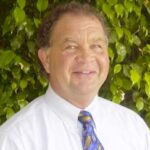
James Sensenig, ND was a 1978 graduate of NCNM in Portland, OR. For over 40 years he maintained an eclectic practice in Hamden, CT. Over the years, Dr Sensenig held prominent positions in the various naturopathic colleges and the AANP. A champion of classical naturopathic medicine, Dr Sensenig received an Honorary Doctor of Naturopathic Philosophy degree from CCNM, and received numerous awards for his dedication to teaching the principles of naturopathic medicine.
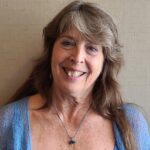
Louise Edwards, ND, LAc graduated from National College of Naturopathic Medicine in 1988, and from the Oregon College of Oriental Medicine in 1989. She had a full-time private practice in Durango, CO, until 2005, when she chose to primarily focus on teaching and writing. She is an adjunct faculty member at National University of Health Sciences and Bastyr University and is a frequent presenter at conferences. Dr Edwards in a founding member of the American Association of Naturopathic Physicians, has served on the AANP board, and served for 15 years in the House of Delegates. She received the AANP’s “Vis Award” in 2011.


